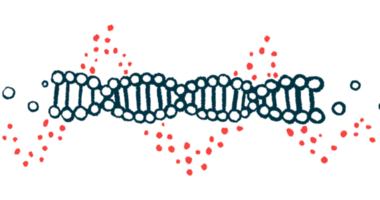Centessa discontinues development of SerpinPC for hemophilia
Treatment was found to be safe, well tolerated in Phase 2 PRESent-2 study

Centessa Pharmaceuticals is discontinuing the clinical development of SerpinPC, its experimental under-the-skin therapy for people with hemophilia A and hemophilia B with or without inhibitors. The therapy was being evaluated in several Phase 2 clinical trials.
The decision follows the recent approval of Pfizer’s Hympavzi (marstacimab), an antibody-based treatment that’s designed to increase the production of thrombin, a protein that promotes blood clotting, in a mechanism similar to SerpinPC’s.
Although Centessa’s treatment was found to be safe and well tolerated in the Phase 2 PRESent-2 trial (NCT05789524), the company determined that more time and investment would be required to continue developing its hemophilia treatment candidate, and decided the approval of Hympavzi made that not worth the effort.
The company will explore potential strategic alternatives for SerpinPC and is channeling its resources to boost the development of its orexin receptor 2 (OX2R) agonists for several sleep-waking disorders, including narcolepsy and excessive daytime sleepiness.
“Moving forward, we intend to prioritize our resources and reallocate net savings of approximately $200 million associated with the planned commercial launch of SerpinPC toward expanding our potential best-in-class OX2R agonist franchise, where we see significant opportunities to both address unmet patient needs and create shareholder value,” John Crowley, Centessa’s chief financial officer, said in a company press release.
Favorable responses to Centessa’s SerpinPC
Hemophilia is mainly caused by mutations in genes that encode proteins, called blood clotting factors, needed for the blood to clot. In each type of hemophilia, one of these factors is missing or malfunctions, making patients susceptible to excessive, prolonged, or spontaneous bleeding. Hemophilia A is caused by a deficiency in factor VIII, while hemophilia B is driven by a lack of factor IX.
Replacement therapies that provide patients with their missing clotting protein are considered the standard treatment for hemophilia. Some patients develop inhibitors, or neutralizing antibodies against the clotting factors, however, which can reduce their efficacy.
SerpinPC reduces the levels of activated protein C, which normally regulates blood clotting by limiting the production of thrombin, an enzyme involved in coagulation. Through this, SerpinPC could help increase thrombin production and promote blood clotting, regardless of disease severity or the presence of inhibitors.
The therapy was evaluated in a Phase 1/2a trial (NCT04073498) where it was given by injections under the skin, or subcutaneously, at various dosing regimens. It was found to have a favorable safety and tolerability profile in healthy volunteers and men with hemophilia A or B. The treatment also significantly decreased the total annualized bleed rates by 96% and spontaneous bleeds by 95% after up to three years of treatment.
The safety and efficacy of different dosing regimens of SerpinPC were also being evaluated in a group of adolescents and adults with moderate to severe hemophilia B without inhibitors, or severe hemophilia A with or without inhibitors who participated in the PRESent-2 trial. In another Phase 2 clinical trial, called PRESent-3 (NCT05789537), the therapy was being tested in people with hemophilia B with inhibitors.
The company was also conducting a long-term open-label extension study called PRESent-6 (NCT06568302) to evaluate the safety and efficacy of SerpinPC for up to 25 months in patients who had completed other trials of the therapy.
SerpinPC was granted fast track and orphan drug status by the U.S. Food and Drug Administration for hemophilia B. The designations are intended to speed the development of treatments that have the potential to fulfill an unmet need in serious and rare disorders, respectively.







